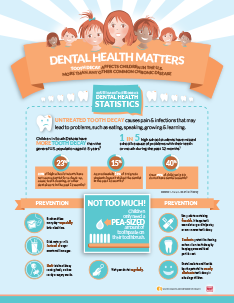A Comprehensive Comparison Between Invisalign And Typical Braces
A Comprehensive Comparison Between Invisalign And Typical Braces
Blog Article
Developed By-Field Isaksen
When confronted with the decision between Invisalign and traditional dental braces, you could question which choice aligns far better with your lifestyle and choices. The option involves more than just the visual allure; it looks into elements like treatment duration, comfort, and long-lasting oral health results. Think about the impact each alternative might have on your day-to-day routine and confidence. As we check out the extensive comparison, you'll acquire understandings into the nuances that make these orthodontic therapies unique and discover which one may be the far better suitable for you.
Materials and Building
When contrasting Invisalign to conventional dental braces, the products and building differ significantly. best dentist near me dentist includes clear, smooth plastic aligners personalized to fit your teeth. These aligners are practically unseen, making them a popular choice for those looking for a more discreet orthodontic therapy.
On the other hand, conventional braces include metal brackets that are glued to your teeth. These braces are then attached by wires and elastic band, applying stress to gradually change your teeth into the wanted position.
The construction of Invisalign aligners enables a more comfy fit contrasted to conventional dental braces. The smooth plastic material lowers irritability to your cheeks and gum tissues, which is a typical concern with steel braces and cords. Furthermore, Invisalign aligners are removable, making it easier to clean and floss your teeth without any blockages.
On the other hand, typical braces are dealt with onto your teeth, needing additional treatment and time for appropriate maintenance.
Upkeep and Oral Health
The upkeep and oral health practices differ in between Invisalign and standard dental braces as a result of their special layout and building.
With Invisalign, you can remove the aligners when eating or cleaning your teeth, allowing you to preserve your normal dental hygiene routine without any blockages. It's crucial to comb your teeth after eating before placing the aligners back on to prevent food particles from obtaining entraped and creating degeneration.
On the other hand, traditional dental braces require additional focus to maintain your teeth clean. Food bits can easily obtain embeded the braces and wires, leading to plaque build-up and possible tooth decay. You'll require to use special devices like interdental brushes or floss threaders to clean between the wires and brackets efficiently.
Normal oral check-ups and cleansings are essential to ensure that your dental hygiene remains in top problem while using traditional braces.
Exposure and Appearance
Exposure and aesthetics play a significant role in the contrast between Invisalign and conventional dental braces. When it comes to look, Invisalign provides a clear benefit over traditional dental braces. Invisalign aligners are practically invisible, making them a popular option for those who like an extra discreet orthodontic treatment alternative.
Unlike the recognizable metal braces and cords of traditional dental braces, Invisalign aligners are transparent and assimilate with your natural teeth, permitting you to smile with confidence throughout your therapy.
Conventional braces, on the other hand, are more conspicuous due to their metal components. While click the up coming web site might opt for colorful bands to customize their dental braces, others may really feel self-conscious regarding the visibility of these orthodontic home appliances. The popular appearance of typical braces can sometimes influence a person's self-worth, particularly for adults in specialist settings.
Conclusion
In conclusion, when picking between Invisalign and traditional braces, consider your way of life and choices. Invisalign supplies a very discreet and comfortable alternative with very easy upkeep, while typical dental braces provide vibrant customization but might influence self-confidence.
Ultimately, the choice needs to be based upon what works best for you in terms of visual appeals, convenience, and comfort. Make sure to seek advice from your orthodontist to establish the most appropriate therapy for your private needs.
